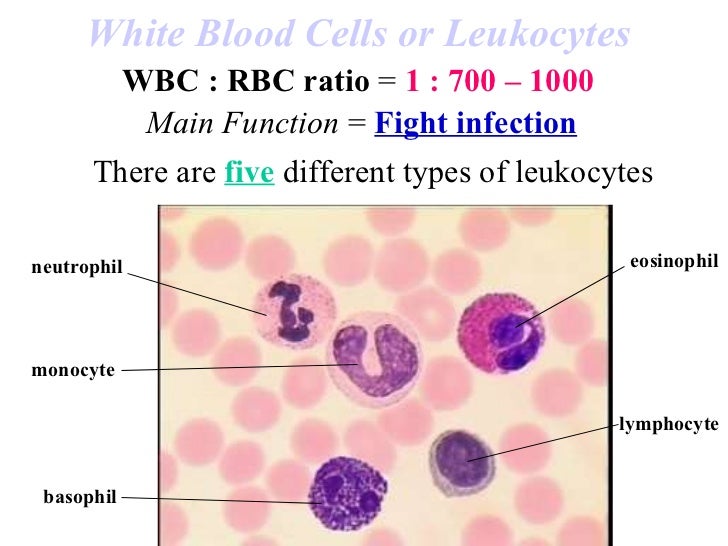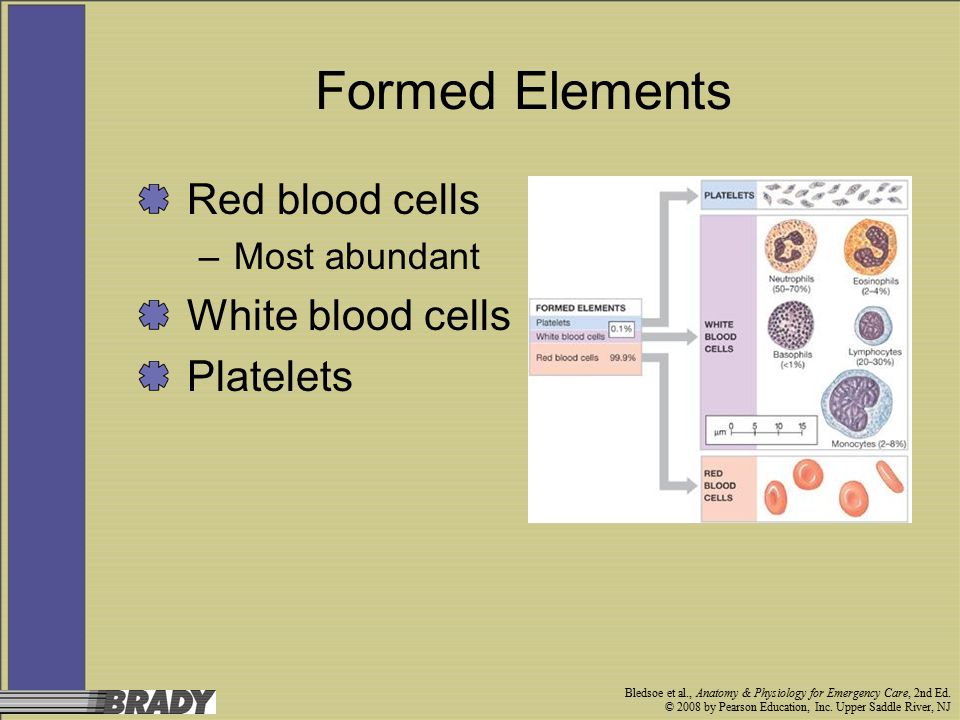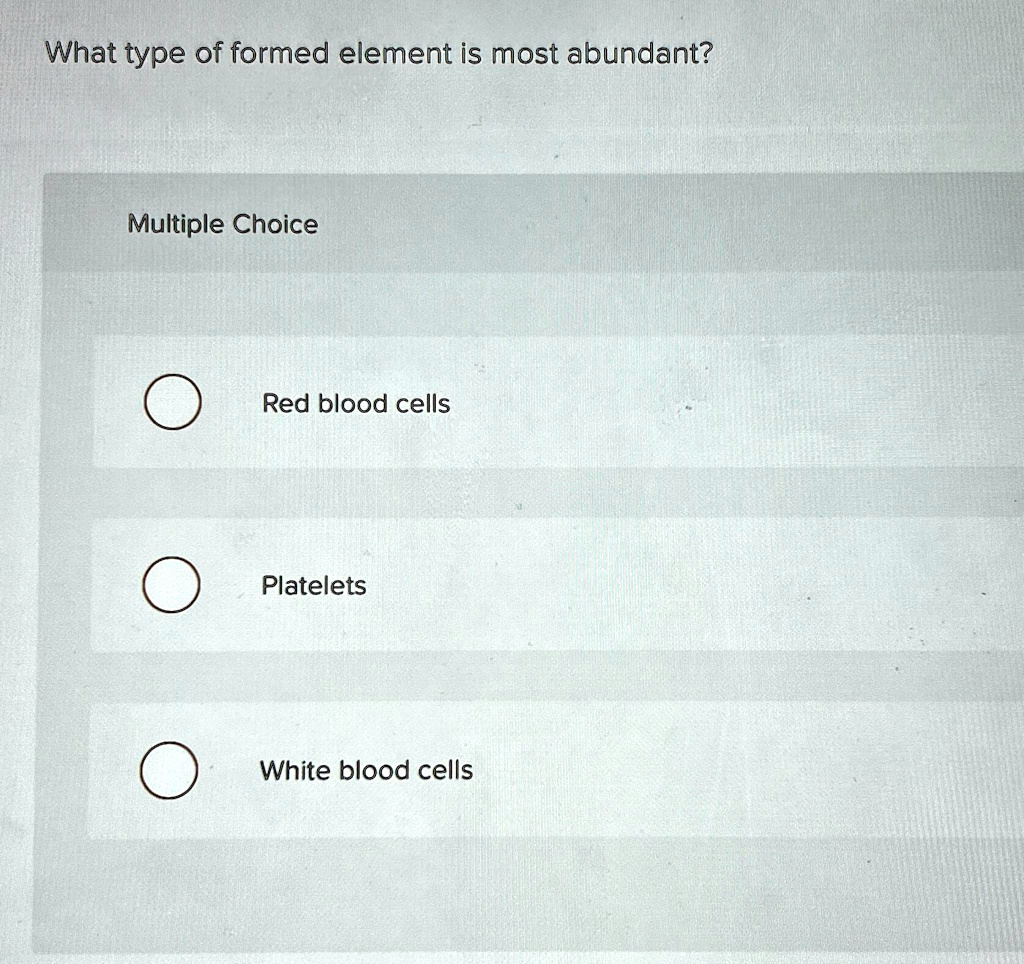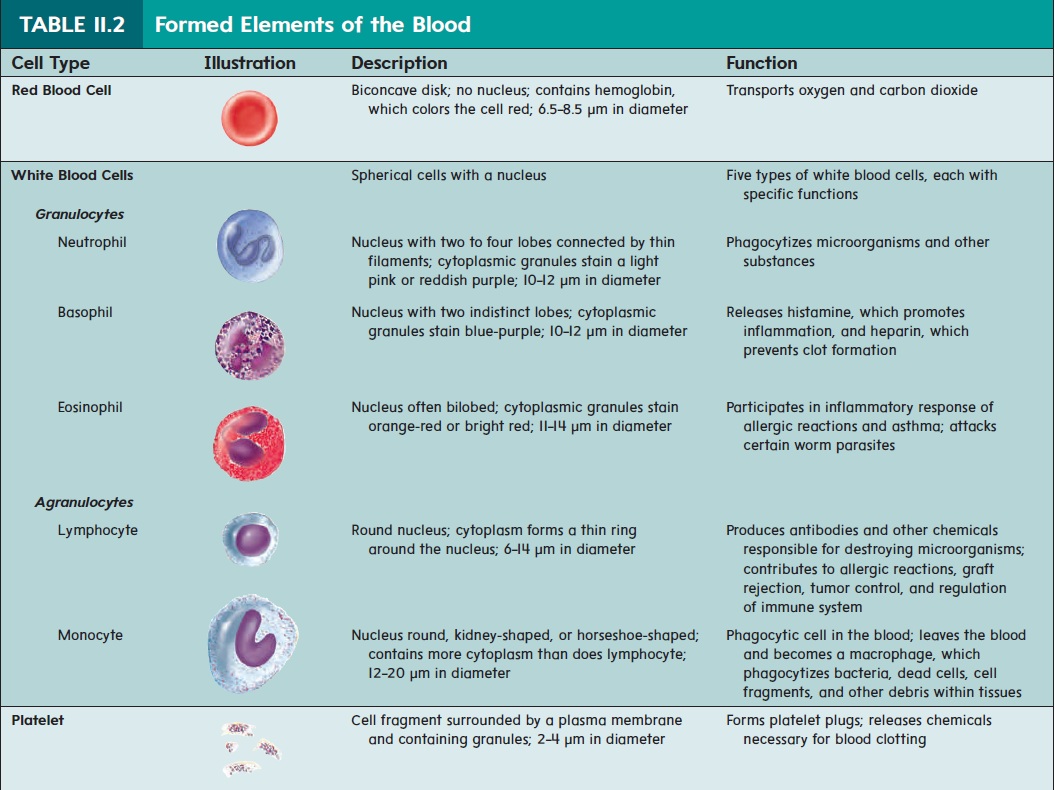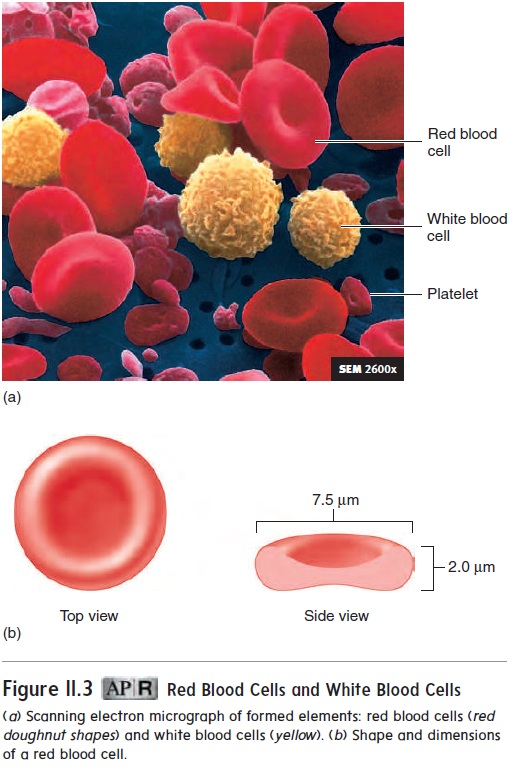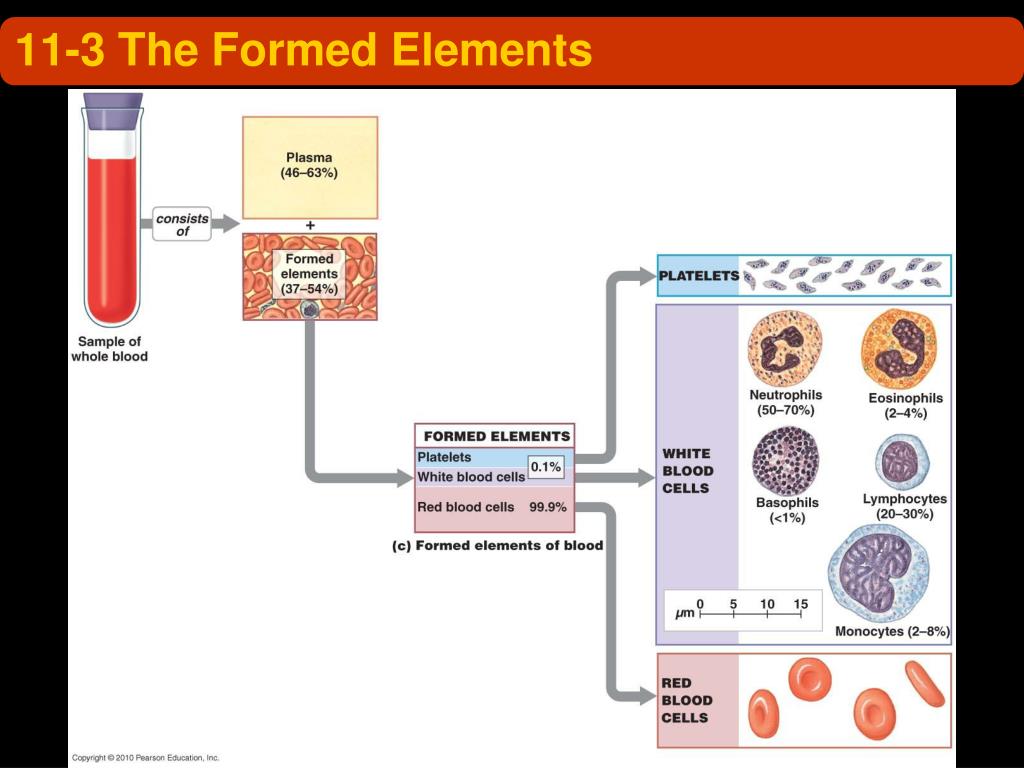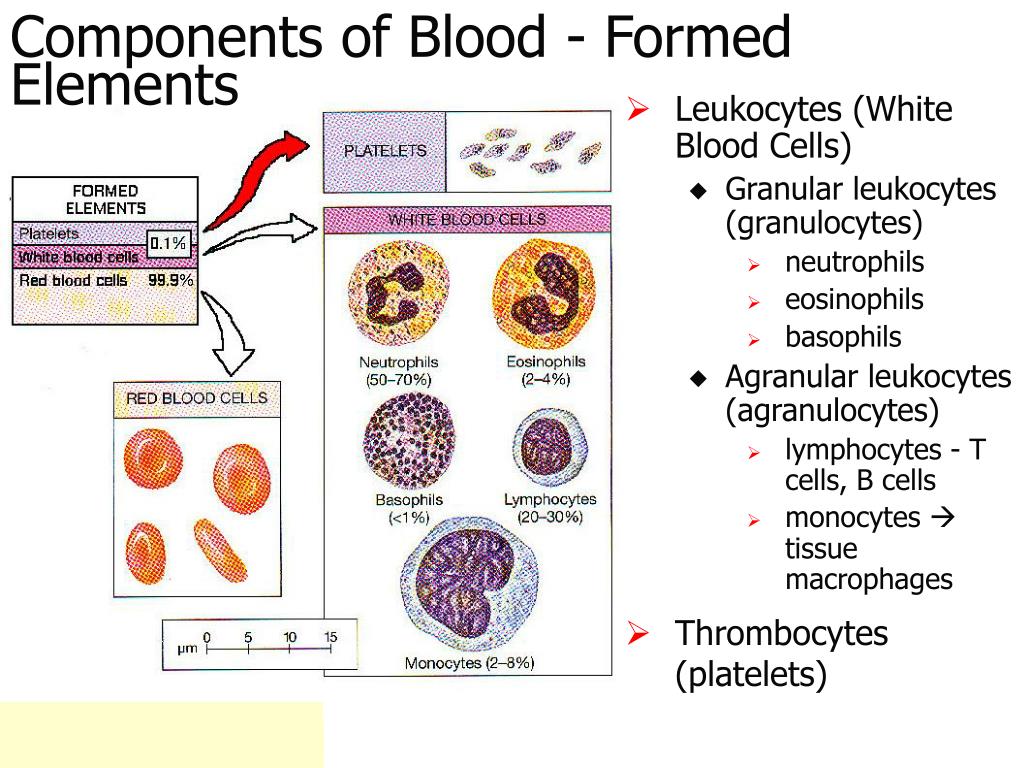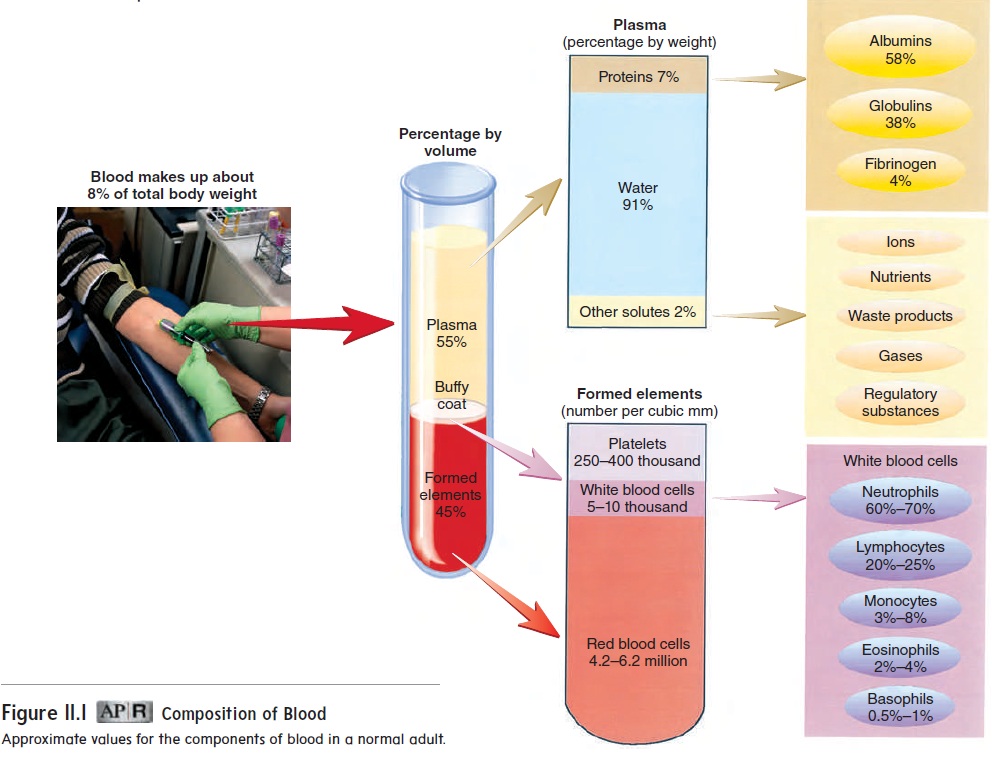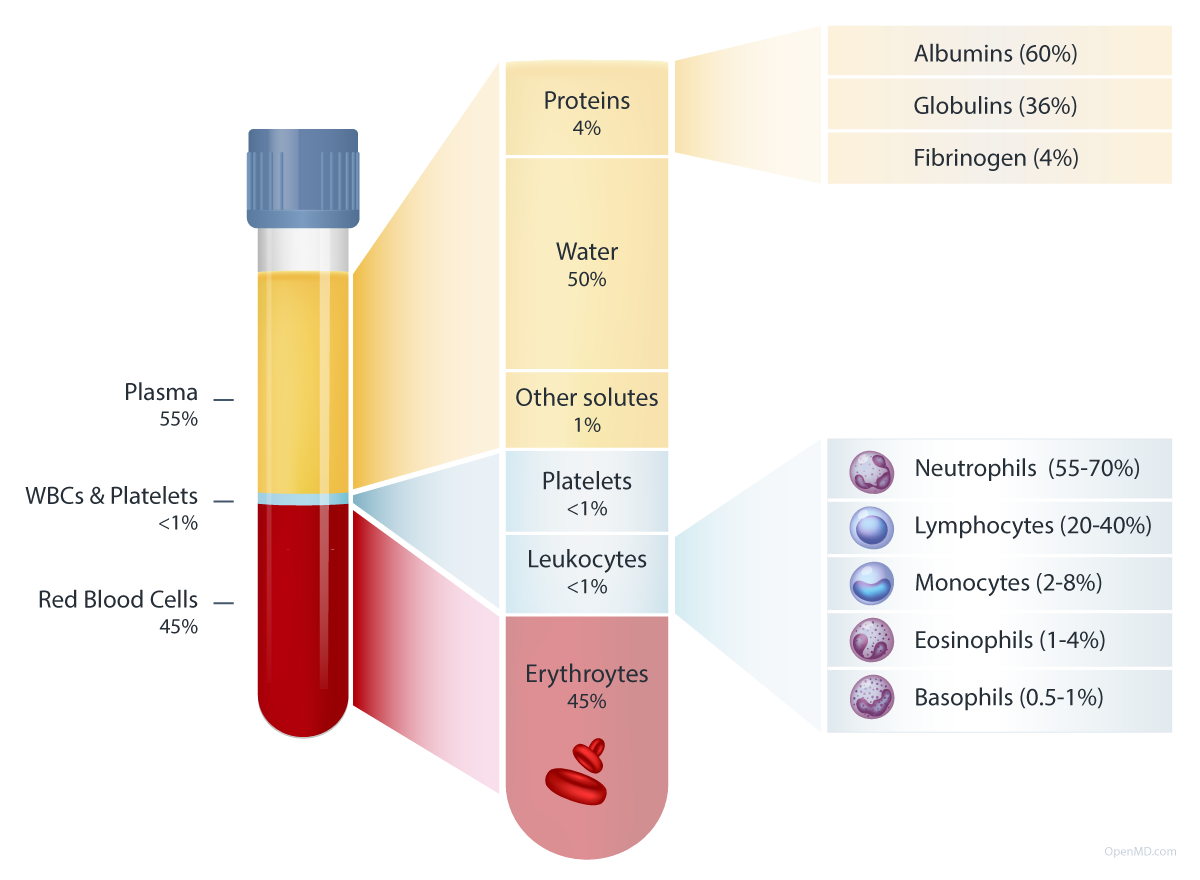What Is The Most Abundant Formed Element Of The Blood

In a matter of life and death, identifying the most abundant formed element of blood is crucial. This isn't just academic—it's fundamental to understanding health and diagnosing disease.
The most abundant formed element in blood is erythrocytes, commonly known as red blood cells. These cells are critical for transporting oxygen throughout the body.
Red Blood Cells: The Workhorses of Circulation
Red blood cells constitute approximately 40-45% of blood volume in adults, a measurement known as the hematocrit. These specialized cells are designed for one primary function: oxygen transport.
They achieve this through hemoglobin, an iron-containing protein that binds to oxygen in the lungs. This oxygenated blood is then circulated to tissues throughout the body.
Data indicates that a typical adult male has around 5 million red blood cells per microliter of blood. Adult females usually have about 4.5 million red blood cells per microliter.
Formation and Lifespan
Erythrocytes are produced in the bone marrow through a process called erythropoiesis. This process is stimulated by erythropoietin, a hormone produced by the kidneys.
The lifespan of a red blood cell is approximately 120 days. After this time, they are removed from circulation by the spleen and liver.
The body then recycles the components, including iron, for new red blood cell production. This efficient system ensures a constant supply of oxygen-carrying cells.
Clinical Significance
Variations in red blood cell counts can indicate various health conditions. For example, anemia is a condition characterized by a lower than normal red blood cell count.
This can result in fatigue, weakness, and shortness of breath. Conversely, polycythemia is a condition marked by an abnormally high red blood cell count.
Polycythemia can increase the risk of blood clots and other cardiovascular complications. Blood tests, including a complete blood count (CBC), are routinely performed to assess red blood cell levels.
Other Formed Elements: A Brief Overview
While red blood cells are the most abundant, other formed elements are also essential. These include leukocytes (white blood cells) and thrombocytes (platelets).
White blood cells are crucial for the immune system, defending the body against infection. Platelets play a vital role in blood clotting.
The balance and interaction of these formed elements are critical for overall health. Any significant deviation from normal levels can indicate an underlying medical issue.
Looking Ahead
Ongoing research continues to refine our understanding of red blood cell function and disorders. Scientists are exploring new treatments for anemia and polycythemia.
They are also working to improve the efficiency of blood transfusions. Continued advances in hematology are crucial for improving patient outcomes.
Regular monitoring of blood cell counts remains a key component of preventive healthcare. Early detection and treatment of blood disorders can significantly improve quality of life.
